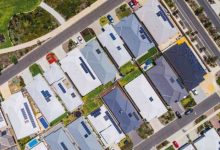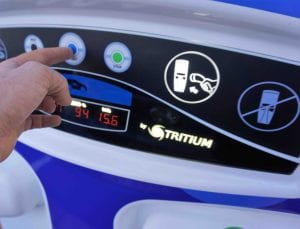Strict standards for inverters that control rooftop solar systems, battery storage devices and electric vehicle charging are on their way, to ensure that inverters can properly “ride through” network faults and not put grid reliability at risk through an uncontrolled shutdown.
In a draft determination published on Thursday, the Australian Energy Market Commission said it supported a rule change request from the Australian Energy Market Operator for an undervoltage disturbance ride-through capability to be mandatory for all new inverters connecting to distribution networks on the National Electricity Market.
The request was actually one of three put to the AEMC by AEMO, which had also wanted a minimum technical standard to cover interoperability and communication interfaces and cyber security measures, as well as inverter performance and grid responsiveness.
But the AEMC’s executive general manager of transmission and distribution networks, David Feeney, said the Commission made the call to focus on bedding down the inverter standards, first, as the highest priority for a rapidly changing grid.
“What we’re doing with this rule change is getting something in place,” said Feeney in an interview with RenewEconomy on Thursday. “South Australia had the most pressing need, and now we’re playing catch-up on one of the most urgent issues for the rest of the market.
The new standard, AS4777.2, is not expected to come into effect until the second half of 2021 – or roughly six months after a final rule is made, which should happen in February – and would apply to new rooftop solar installations only, or inverter upgrades, but not existing systems.
And it differs from the rules recently rushed through in South Australia in that it does not require solar households to nominate an “agent” to switch off their solar if asked to by the market operator.
“While South Australia has addressed the issue through its own jurisdictional mechanism, the potential for the issue to arise in other jurisdictions in the near future indicates that it is important to take action now,” the AEMC draft determination said.
“The draft rule change does not change how inverters are operating today in terms of being switched on or off,” added Feeney. “It just requires them to confirm they meet technical standards. It doesn’t give anybody any extra power to switch off inverters.
“That is a communications issue, which is one of the things in the rule change request that this draft rule change does not currently include,” he said.
The AEMC determination said the Commission was satisfied that setting the needed technical requirements through a standard to apply across the NEM was an appropriate response, as it would enable a “timely, cost-efficient mechanism suitable to the scope of the issue.”
To this end, the AEMC says the plan is to leverage any existing mechanisms that are already in place to enforce the new standard, including the testing mechanisms already in use via the certification scheme run by the Clean Energy Council.
“Testing of equipment need to happen,” said Feeney, “but we’re very conscious of trying to minimise costs, so we wanted to make use of the CEC’s existing equipment.
“Rather than try and make something from scratch, we just wanted to leverage what was already in place,” he said.
Feeney said the hope was that there would be minimal impact on the solar industry, in terms of being saddled with redundant stock once the new standard comes in to play. And for those retailers and installers needing to adjust, there is some time to act as a buffer.
“The industry’s moving in this direction anyway, and we know that the [Standards Australia rule] AS4777.2 is required already in some other states,” he noted.
As for what this will mean for consumers, Feeney believes the benefits will outweigh any of the potential downsides or extra costs that might result from the new rule.
“This is kind of part of the whole DER (distributed energy resources) participation story,” he told RE. “We’re moving from an age of reasonably passive DER to more active DER. So you would expect over a period of time there are some benefits that defray (any costs).”









